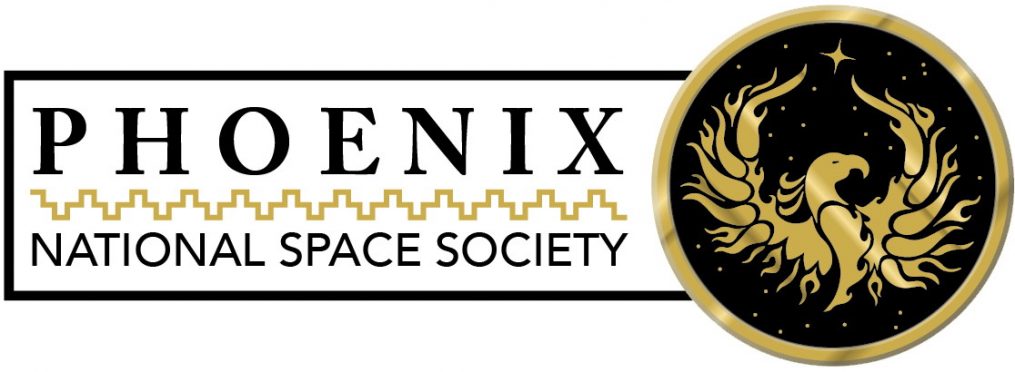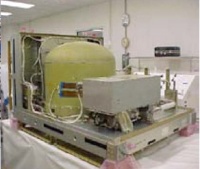|
Part I, Part II, Part III
|

International Space Station. Credit: NASA Image |
It now appears likely that the mission of the International Space Station (ISS) will be continued through 2020 (See the Augustine Scenarios). And following NASA’s announcement in September of the release of the report on “International Space Station Science Research Accomplishments During the Assembly Years: An Analysis of Results from 2000-2008”, now would be a good time to look back on the scientific accomplishments so far, and to look ahead. Because NASA’s report is 250 pages in length, we will digest it in small pieces.
The major areas of research include:
- Technology Development for Exploration
- Physical Sciences in Microgravity
- Biological Sciences in Microgravity
- Human Research Program
- Observing the Earth and Educational Activities
- Science from International Space Station Observations
|
Following launch of the Russian Zarya module in 1998, and before human occupation began in 2000, several experiments were conducted:
- Protein Crystal Growth – Enhanced Gaseous Nitrogen Dewar (PCG-EGN)
- Commercial Generic Bioprocessing Apparatus: Kidney Cell Gene Expression (CGBA-KCGE) and Synaptogenesis in Microgravity (CGBA-SM)
- Incidence of Latent Virus Shedding During Space Flight (Latent Virus)
- International Space Station Acoustics Measurement Program (ISS Acoustics)
One of the most exciting results reported from ISS research is the confirmation that common pathogens change and become more virulent during space flight, performed in September 2006. This has important implications for extended human missions. It is also a target for additional research.
|
During the time covered by this report, steady growth in publications associated with ISS research has occurred, as shown in the graph to the right.
What have been the major research results in each of the six areas discussed in the report?
Technology Development for Exploration
One of the most important concerns of any space based operation has to be air quality. Therefore, the experiments with the “Analyzing Interferometer for Ambient Air” (ANITA) instrument will prove crucial to future explorers. “ANITA was calibrated to simultaneously monitor 32 gaseous contaminants (including formaldehyde, ammonia, and carbon monoxide (CO)) at low as parts per million levels in the ISS atmosphere. The hardware design—a quasi on-line, fast-time resolution gas analyzer—allowed air quality to be analyzed in near real time.”
|

Credit: NASA Image |
As an example of the importance of these capabilities, the report notes that “ANITA was used in mid 2008 to detect a Freon leak (Khladon 218) from the Russian air conditioner, and to monitor the timeline of Freon concentrations with CDRA operations and shuttle docking. The ANITA data helped to determine that the zeolite bed in the CDRA was not effective in scrubbing the Freon leak, but that diluting the ISS air after the docking with the shuttle substantially reduced the level of Freon” (p18).
Other research topics include:
- The Active Rack Isolation System (ARIS), which protects equipment by absorbing the shock of motion before it can affect an experiment.
- The Smoke and Aerosol Measurement Experiment (SAME), which is planned to gather particulate size information on ISS. It is known that fires in microgravity produce smoke particles that are larger than on Earth. Being able to distinguish between smoke and other particles on ISS is important.
- “The elastic memory composite hinge (EMCH) experiment provided test data on new materials that will further space hardware technology. This technology may eliminate the need for highly complex deployment mechanisms by providing a simpler, lightweight alternative to mechanical hinges. EMCH builds on the previous space shuttle experiment, lightweight flexible solar array hinge (LFSAH) that was flown on STS-93” (p 22).
- “The In-SPACE Soldering Experiment (ISSI) is another payload that was rapidly developed after the Columbia accident to provide a lowmass experiment using hardware already on board station. It was designed to promote understanding of joining techniques, shape equilibrium, wetting phenomena, and micro-structural development in space” (p 23).
Physical Sciences in Microgravity
While Technological Development is important for space exploration, pure research also has a place on the ISS. Protein crystal growth, fluid physics and materials science are being researched:
- The Advanced Protein Crystallization Facility (APCF) can support three crystal-growth methods: liquid-liquid diffusion, vapor diffusion, and dialysis. In the vapor diffusion method, a crystal forms in a protein solution as a precipitant draws moisture in a surrounding reservoir. In the dialysis method, salt draws moisture away from the protein solution via a membrane separating the two and forming crystals. Initial analysis of the crystals that were returned from station supports the findings of earlier APCF flights: comparative crystallographic analysis indicates that space-grown crystals are superior in every way to control-group crystals that are grown on Earth under identical conditions (p 47).
- The Binary Colloidal Alloy Test hardware supported “three investigations in which ISS crews photographed samples of colloidal particles (tiny nanoscale spheres suspended in liquid) to document liquid/gas phase changes, growth of binary crystals, and the formation of colloidal crystals that were confined to a surface. Colloids are small enough that in a microgravity environment without sedimentation and convection, they behave much as atoms. By controlling aspects of colloidal mixtures, they can be used to model all sorts of phenomena” (p 49).
- Protein Crystal Growth-Enhanced Gaseous Nitrogen (PCG-EGN) was designed to produce crystals of various biological compunds. Also, some 500 student preparations were made as part of an education program to teach students about crystallization, crystallography methods and the impact of crystallography on medicine and biotechnology. A significant number of crystallization were successful. Indeed, some of the results produced better data than could be obtained in Earth bound efforts (p 69).
Sometimes, “no” is just as important as “yes”.
Researchers have found that it is possible to grow high-quality protein crystals in the weightlessness of LEO, where gravitational forces will not distort or destroy a crystal’s delicate structure.
The goal of the Dynamically Controlled Protein Crystal Growth (DCPCG) experiment was to control and improve the crystallization process by dynamically controlling the elements that influence crystal growth.
DCPCG was the first flight test of an apparatus that was designed to control the crystal growth process by controlling the rate of evaporation. The apparatus worked on orbit, and crystals were grown for the test proteins; however, the investigators determined that the growth could have been better. The same apparatus was used in extensive testing on the ground. Researchers tested a selection of protein solutions, including insulin (a hormone that is produced by the pancreas to regulate the metabolism and use of sugar), serum albumin, and lysozyme (an enzyme that attacks bacteria) and found that a slower evaporation rate yielded better results than a more rapid evaporation rate. While the results of the ground tests were published, the DCPCG experiment investigators did not seek to publish any structures from crystals grown in orbit.
What’s Ahead
In 2008, the European Space Agency’s (ESA’s) Columbus and Japanese Aerospace Exploration Agency’s Kibo scientific modules joining NASA’s Destiny Laboratory. Further, in 2009, the number of crew members increased from three to six. This means that a lot more time is available for research in the future.
New experiments aboard the ISS include a broad range of science, as follows:
- Coordinated human research experiments that collaborate with International Partners’ science objectives and activities, including shared baseline data collection and in-flight sampling, with the goal of understanding integrated causes and effects of changes in the human body.
- Research using new science racks, including the fluids integrated rack (FIR), the combustion integrated rack (CIR), and materials science research rack (MSRR), will enable new experiments exploring combustion, fluid behavior, and heat-dependent crystallization patterns in metal alloys.
- Exploration Technology Development will build from early experiments on materials exposure, smoke generation, liquid fuel management, and environmental monitoring.
- The new Window Observation Research Facility (WORF) will provide capabilities to support remote sensing instruments, enabling Earth Science research that will, for example, document crop health and test the utility of blue-green bands for ocean research.
Part I, Part II, Part III









You must be logged in to post a comment.